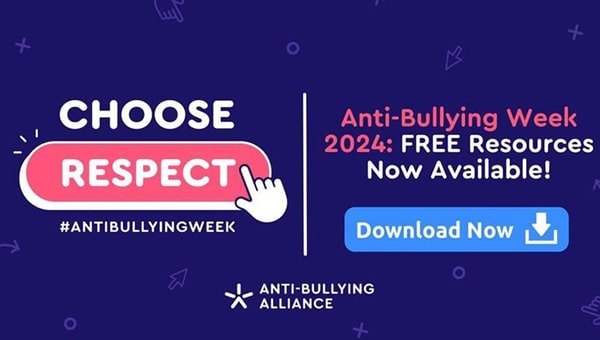Free Marketing to Schools Toolkit
38 smart, school-focused ways to connect better with, and sell more to, education establishments and the decision-makers that control them.
38 smart, school-focused ways to sell better to schools
Download as PDF
Download 38 Tip Toolkit Download ReportAbout the author
This report was written by Ben, Sprint Education Co-Founder.
“I co-founded Sprint Education back in 2007 with a mission to transform how businesses and edtech brands connect with schools. Over the years I’ve seen first-hand
what works (and what doesn’t) when it comes to marketing to educators, and I’ve helped hundreds of companies build meaningful, lasting relationships with schools.
I’ve written this report to share with you 38 key insights and strategies that you can employ today to make quick gains in the marketing to schools world.”
Ben Lewis
Co-Founder – Sprint Education
Introduction
Selling to schools is unlike selling in any other sector.
Decisions aren’t driven purely by profit margins or shareholder returns, they’re driven by students, teachers, compliance, inspections, community expectations, and tight (often shrinking) budgets.
School leaders weighing up your product aren’t just thinking “Will this work?”, they’re thinking “Will this help my staff cope? Will this improve outcomes for students? Will this make us inspection-ready? And can we possibly afford it?” That’s why so many education brands struggle to break through.
Traditional sales and marketing tactics that might work in the corporate world often fall flat in education. Teachers don’t want cold calls during lesson prep. Head Teacher/Principals aren’t swayed by generic brochures. And finance teams are under immense pressure to justify every penny.
But here’s the good news: the education sector is also one of the most rewarding markets to work in. Once you understand its unique dynamics, schools become loyal, long-term partners.
They love working with brands that genuinely understand their challenges and make their lives easier. If you can demonstrate real value, time saved, workload reduced, student achievement improved, schools won’t just buy from you once, they’ll keep coming back year after year.
This guide is designed to give you the practical, proven, and creative tools you need to do exactly that. Each idea blends classic marketing and sales strategies with insights tailored to the education system, ensuring that what you do actually resonates with the people who matter: teachers, leaders, and decision-makers.
Some of these tactics are big-picture strategic plays, while others are simple quick wins you could implement tomorrow. All of them are designed to help you cut through the noise, connect authentically with schools, and ultimately boost your performance in this unique marketplace. So, whether you’re an edtech start-up, a training provider, or an established education brand looking for fresh momentum, dive in to the 38 smart, school-focused ways to connect better with, and sell more to, schools and the decision-makers that control them.
1. Tell Stories, Not Specs
Teachers and school leaders are far more inspired by real-world impact than by technical details. While features and specs have their place, it’s the human stories of improved grades, happier staff, or engaged students that resonate and persuade. When you tell stories, you make your product’s value tangible and memorable.
Example: Instead of saying “Our platform uses adaptive algorithms to tailor learning,” you share: “At Greenfield Academy, 72% of Year 8 students improved their maths scores by at least one grade after using our tool for just one term. One student who was struggling with fractions finally said, ‘I get it now.’ That moment is why teachers love it.” The story brings your product’s benefits to life far better than a feature list ever could.
2. Use Peer Influence
Educators trust other educators. A polished sales pitch can be dismissed, but a testimonial from a respected teacher or a case study from a similar school carries real weight. By gathering and sharing peer-generated stories, quotes, and examples, you tap into the power of professional trust.
Example: Instead of saying “Our platform improves student engagement,” you feature a case study where a teacher explains: “Since introducing [Product], our Year 7 students are now participating in class discussions at double the rate we saw last year.” You include their name, school, and even a photo. For other schools, this isn’t marketing, it’s proof from a peer they can relate to.
3. Create Free Resources
Give before you sell. Free lesson plans, worksheets, or professional development guides earn goodwill and keep you top of mind.
Example: Host your free resource as a lead magnet behind a simple turnstile form on your website. This way, every download captures contact details, allowing you to nurture those teachers with follow- up emails, invitations to webinars, or product trials.
4. Segment by School Type
Don’t market to “schools.” Segment by primary/elementary and secondary/high, mainstream vs. district, or high deprivation vs. low deprivation, etc., and tailor the pitch.
Note: We manage the world’s most powerful education marketing database which can be filtered by dozens of categories, empowering ou to target the right schools with content relevant to their individual set up and position.
5. Leverage Development Budgets
Schools often have mandatory professional development budgets allocated for training. The smartest education suppliers position their products as development-compliant, even if they’re not traditional “training providers.” By showing how your solution helps staff meet their professional development goals, you unlock a funding stream schools must spend.
Example: Instead of pitching your software as “a lesson planning tool,” you frame it as: “Our platform comes with on-demand professional development modules that help teachers integrate technology into their classrooms, modules that count toward their annual training requirements.” A head of department now sees your product not just as software, but as a legitimate way to use their development budget, making purchase approval much easier.
6. Appeal to Compliance/Inspections
Schools don’t just buy resources to make life easier they also buy to stay compliant and perform well during inspections. If you can clearly show how your product helps them tick boxes, hit benchmarks, and shine in reports, you’ll align with one of their biggest priorities.
Example: Instead of saying “Our system tracks safeguarding concerns,” you frame it as: “Our digital safeguarding log gives inspectors a clear, evidence-based record of incidents and interventions. At one school, this meant their safeguarding lead could instantly produce detailed reports during an inspection removing stress and earning praise from inspectors.”
7. Create a “Decision-Makers Guide”
Too often, you win over the teacher who needs your solution, only for the final decision to get rejected by the senior leaders.
Don’t let your momentum stall. Create a polished guide that speaks directly to school leadership, showing how your solution drives whole-school improvement and supports their staff. For example, position it as the missing link that helps the maths teacher struggling to lift exam results.
8. Go Offline
In an age of overflowing inboxes, physical print marketing still cuts through in schools. A well-designed poster, postcard, or brochure pinned up in the staffroom or dropped on a teacher’s desk can create conversations that an email never would. Print feels tangible, harder to ignore, and often lingers in the staffroom long after an email is deleted.
Example: Instead of another promotional email, you send a brightly designed A3 poster with the headline “Save 2 Hours a Week with Smarter Lesson Planning.” It comes with a QR code linking directly to your free trial. Teachers see it during coffee breaks, chat about it, and one brings it up in the next department meeting, your brand becomes part of their daily environment without needing a digital click.
9. Offer Free Trials
Teachers love the chance to “try before they buy”, but only if it’s simple. Trials that need IT sign-off, complex onboarding, or endless forms will kill momentum. Keep it frictionless: one-click access, ready-to-use content, and minimal setup so teachers can get value within minutes.
Example: Instead of asking schools to complete a 10-step registration, you provide a “click and go” 30-day trial of your science platform with ready-made experiments and lesson plans. A science teacher logs in during their lunch break, runs an experiment simulation the same afternoon, and immediately sees how it engages their students. By reducing barriers, you’ve turned curiosity into genuine advocacy.
10. Gamify the Trial
A free trial often falls flat if teachers are too busy to explore it. By gamifying the experience, you can encourage real engagement. Add leaderboards, certificates, or rewards that spark a sense of fun and competition, while still showing off your product’s value.
Example: A school runs a 30-day trial of your literacy app. Every time a teacher sets an activity, they earn points on a leaderboard. At the end of the month, the top three “Literacy Champions” get a certificate for their staffroom wall and a box of chocolates. The trial suddenly becomes a staff talking point, usage skyrockets, and the leadership team can see genuine results, making the final purchase decision far easier.
11. Show Cost Saving ROI
School budgets are tight. Clearly calculate “cost per student” and demonstrate how it saves money elsewhere. Leaders want to see not just what your product costs, but what it replaces, reduces, or improves financially.
Example: Instead of simply saying “Our literacy software costs X per year,” frame it as: “That works out to just X per pupil annually. By using our platform, one school reduced their spend on external intervention tutors by X a year, while also boosting reading ages across the school. The software paid for itself in the first term.”
12. Use Social Proof
School leaders are cautious decision-makers, but they trust the choices of their peers. By showing how many schools, teachers, or students already use your product, you reduce perceived risk and build instant credibility. The bigger and more specific the number, or the more relatable the testimonial, the more persuasive it becomes.
Example: Instead of saying “Our platform is popular with schools,” you state: “Trusted by over 2,000 schools, including 6 of the top 10 performing academies in the UK.” A Head Teacher/Principal scanning your website immediately feels reassured that their peers have already chosen you, making it safer to follow suit. For smaller numbers, lean on relatability: “Chosen by 80% of secondary schools in Birmingham” may be more powerful to a Birmingham Head Teacher/Principal than a nationwide stat.
13. Run Webinars
Webinars are a low-cost, high-impact way to engage schools, if you keep them short, practical, and valuable. Teachers won’t sit through an hour-long sales pitch, but they will join a 30-minute session that gives them actionable strategies, inspiration, or free professional development. The product should support the session, not dominate it.
Example: Instead of running a “Product Walkthrough Webinar,” you host a session called “5 Ways to Boost Maths Results in 2025.” The webinar includes quick revision strategies, case studies from other schools, and a practical resource teachers can download. Your maths platform is shown naturally as part of the solution, not the focal point. Attendees leave with tips they can use tomorrow, and a positive first impression of your brand.
14. Create “Teacher Champions”
Give early adopters badges, certificates, or titles like “School Innovation Partner” to build loyalty. Recognition turns your users into advocates, boosting word-of-mouth inside their school and beyond.
Example: Imagine a science teacher who trialed your platform early on and loved it. You give them a “Digital Learning Champion” certificate to display in their classroom, along with a badge for their email signature. Suddenly, they’re known across the school as the go-to person for your product. When colleagues see the recognition (and the results in their lessons), they’re more likely to ask questions, adopt the tool themselves, and support the purchase at leadership level. That teacher isn’t just a user; they’ve become your in-school influencer.
15. Focus on Student Outcomes
Teachers care less about software features than student benefits. Frame everything in terms of attainment, inclusion, or wellbeing.
Example: Rather than saying “Our software provides interactive quizzes,” say, “At one school, using our platform’s quizzes helped students improve their maths test scores by an average of 12% in just one term, while giving teachers instant insight into which students needed extra support.”
16. Use Seasonal Hooks
Schools run on a calendar of fixed milestones, budget deadlines, exam seasons, and the all-important back-to-school rush. By timing your campaigns to these natural peaks, you’ll align with what’s front-of-mind for teachers and leaders, making your message feel relevant and urgent.
Example: In May, you launch a campaign titled “Boost Your Students’ Exam Confidence” with resources, tips, and a free trial of your revision tool right when teachers are scrambling for last-minute support. Or, in August, you send a “Back-to-School Starter Pack” to schools with lesson templates, posters, and webinar invites. Because your campaign lands at exactly the right moment, teachers are more likely to engage and act.
17. Bundle Your Offer
Rather than selling individual tools or services piecemeal, package them into a whole-school solution. Bundles not only increase your average order value, but also make it easier for schools to justify the spend: one purchase order, one supplier, one solution that solves multiple challenges at once.
Example: Instead of pitching your assessment tool, webinars, and classroom resources separately, you create a “Whole-School Progress Pack.” For one annual fee, schools get access to the assessment software, three training days, and a library of subject resources. A Head Teacher/Principal who might hesitate over three small purchases sees a single, bigger solution that improves consistency across the school and is easier to push through procurement.
18. Highlight Wellbeing Benefits
Staff and student wellbeing is a major priority for schools, often as important as attainment. Leaders are under pressure to reduce teacher stress, tackle workload, and support pupil mental health. If your product eases pressure, saves time, or promotes balance, make that a central part of your message not an afterthought.
Example: Instead of saying “Our platform automates lesson planning,” frame it as: “Teachers using our system reported saving an average of 3 hours a week on planning time they now spend with their families or running after-school clubs. That’s not just improved efficiency; it’s reduced stress and better wellbeing for staff.” A Head Teacher/Principal sees this as more than software it’s a tangible investment in staff morale and retention.
19. Make Data Easy
Schools collect endless streams of data - attendance, attainment, wellbeing results - but staff rarely have the time to untangle it. The winners in this space aren’t the ones who give schools more data, but those who give them clarity. If your product can distil complex information into simple dashboards, one-page summaries, or visual reports, you’ll save teachers hours while giving leaders exactly what they need to make quick, confident decisions.
Example: Rather than saying “Our platform holds every assessment record,” position it as: “Our dashboard gives leaders a one-page impact report with student progress codes: green for on track, amber for concern, red for urgent support. A teacher at one school used it to spot gaps in students reading progress within minutes, something that previously took days of data crunching. The clarity meant interventions were rolled out instantly, boosting results without overloading staff.”
20. Create Downloadable Checklists
Teachers and leaders love practical, ready-to-use resources they can apply straight away. Downloadable checklists feel simple, helpful, and actionable while giving you the perfect chance to “bake in” your product as part of the solution. They also work brilliantly as lead magnets, driving sign-ups while providing genuine value.
Example: Instead of simply promoting your intervention management tool, you create a free PDF: “7 Steps to Restoring Calm in the Classroom.” Each step offers a practical strategy, and one highlights how your platform can automatically log and review classroom incidents. A head of year downloads it, uses the first two steps immediately, and when they see the product mentioned, it feels like a natural extension not a hard sell.
21. Offer School-Wide Pricing
Per-school, per-District, or per-Trust pricing simplifies procurement compared to per-user models. Leaders dislike complicated “per- seat” calculations, it slows down decision-making and often feels like hidden costs. A single, all-inclusive price makes budgeting easier and feels more transparent.
Example: Instead of charging X per teacher per month, offer a flat annual subscription for the whole school. Secondary schools with lots of staff may quickly see that under the old pricing model, costs could spiral out of control. With the school-wide subscription, they would gain unlimited access for all staff/subjects, while you win the deal in record time because the decision-makers didn’t have to haggle over numbers.
22. Show Environmental Benefits
Schools are under increasing pressure to demonstrate their commitment to sustainability, not just for inspections, but also to meet parental and community expectations. If your product helps reduce waste, energy use, or carbon footprint, highlight it clearly.
Example: Instead of saying “Our platform is cloud-based,” frame it as: “By moving to our digital homework system, one school cut their annual paper usage by 200,000 sheets, the equivalent of saving 24 trees and substantial printing costs. That’s money back in the budget and a big win for the school’s eco-committee.”
23. Use Video
Short explainer videos with animated student/teacher stories work brilliantly in schools.
Example: Make sure your videos are hosted on YouTube but importantly your website as well. Not every school has web-access to YouTube, whilst a video on your website will be seen and also keep that viewer on your site, which ideally is where you want them to be in the first place.
24. Run Pilot Projects
Offer “free pilots” with selected schools, then use results as case studies. A well-run pilot proves your product works in a real-world setting, builds internal advocates, and gives you data to showcase to other schools.
Example: You offer a term-long pilot of your maths intervention tool in three classes. During the trial, the maths lead reports a 15% improvement in average test scores, and teachers highlight how much easier it was to track student progress. At the end of the pilot, the school decides to roll it out across all year groups, and you now have a measurable success story you can share with other schools in your marketing.
25. Co-Create with Schools
Teachers know their classrooms better than anyone. By involving them in shaping your product whether through beta testing, advisory panels, or co-designed resources you not only create a better solution but also win champions who feel genuine ownership. When you celebrate those schools as “innovation partners,” you give them pride and visibility while showing others that you’re a trusted collaborator, not just a vendor.
Example: While developing a new assessment feature, you invite three schools to join a “Teacher Advisory Panel.” Their staff provide feedback on usability and suggest improvements that make the tool more classroom-friendly. Once launched, you promote these schools as official “Innovation Partners,” featuring their logos in your marketing and sending them certificates for their staffroom. Not only do they become loyal advocates, but other schools see the credibility of your co-creation approach and want to be part of it next time.
26. Simplify Procurement
Schools are often interested in a solution but get bogged down in procurement red tape. Long, jargon-filled proposals or pricing sheets create friction and risk losing momentum. By keeping your proposal short, clear, and aligned with education procurement frameworks, you make it easier for leaders to say “yes” quickly. Simplicity builds trust and speeds up the buying process.
Example: Instead of sending a 20-page proposal full of technical specs, you provide a one-page document that outlines: the problem you solve, the outcomes for staff and students, the clear cost-per- school, and how it aligns with approved frameworks. A Head Teacher/Principal glances at it and says, “I can take this straight to the board without editing.” That removes barriers and helps close the deal faster.
27. Leverage Alumni Networks
We’ve already covered the power of peer-generated content, but don’t overlook the credibility within your own team. Ex-teachers working in your company can be front-line advocates to schools.
Share classroom stories, the struggles and wins, and how they were inspired to join (or build) your education brand. School staff instantly connect with “one of their own,” and your content will carry far more weight than generic marketing ever could. You’ve walked in their shoes, make sure they know it.
28. Offer Staggered Payment Terms
Large upfront invoices can be a deal-breaker for schools working within rigid budgets and cash flow constraints. By aligning your payment structure with their natural cycles semester/termly or annual you make your solution easier to approve and less intimidating to commit to. Flexible payments remove friction and show that you understand the realities of school finance.
29. Highlight Safeguarding Benefits
Safeguarding is one of the highest priorities for every school. If your product contributes to student safety, wellbeing, or compliance, even indirectly, it should be a major part of your pitch. Leaders are far more likely to adopt solutions that help protect students and meet legal requirements.
Example: Instead of saying “Our platform lets staff log concerns digitally,” frame it as: “One primary school used our system to flag and share safeguarding concerns across staff more quickly. When a pattern of small incidents emerged for one pupil, it was identified weeks earlier than it would have been under their old paper-based system. That early intervention kept the child safe and satisfied inspection requirements.”
30. Case Study Roadshows
Nothing is more persuasive than a peer sharing their real-world success. Instead of presenting alone, bring along a school leader who has already seen results with your product and let them co- present.
Their credibility and authenticity will carry far more weight than your sales pitch ever could. Plus, roadshows create a buzz by turning one school’s story into a regional talking point. If a roadshow is not possible, invite them to guest speak in a webinar you are holding.
31. Curriculum-Linked Examples
Schools are under constant pressure to meet curriculum requirements. If you can show how your product directly supports curriculum frameworks, you’ll move from being “nice-to-have” to “essential.” The more specific and relatable your examples, the stronger your case.
Example: Instead of saying “Our platform improves literacy skills,” show how it maps onto the English National Curriculum: “Our comprehension modules align with Year 6 objectives on inference and deduction, giving teachers ready-to-use resources that prepare students for exams.” In the US, you could position it as: “Our reading tool is fully aligned with Common Core standards for Grade 5, covering RL.5.1 through RL.5.4.” Leaders immediately see how your solution fits into their daily teaching requirements.
32. Offer Quick Wins
Teachers are drowning in workload, so they’re not excited by promises of “long-term transformation” that takes half a year to achieve. They need to see immediate relief, something that saves them time tomorrow, not just next year. Highlight features that deliver instant wins, then build the bigger vision once they’re hooked.
Example: Instead of pitching your platform as “a comprehensive solution for tracking long-term student progress,” show teachers how, within minutes, it can auto-mark quizzes and generate feedback for every student in the class. That’s one hour of marking time saved this week. Once they’ve experienced that time-saving, they’ll be more receptive to the broader benefits.
33. Leverage District or Local Authority Networks
While many schools now operate independently, districts/local authorities and councils still hold sway in areas such as safeguarding, SEND, professional development, and training, as do Multi-Academy Trusts. Winning over a district, local authority, or trust can open doors to dozens of schools at once, giving your brand instant credibility and reach. Position yourself as a partner that helps the authority deliver on its priorities.
Example: Instead of pitching your safeguarding tool school by school, you approach the district/local authority’s safeguarding board. You offer to run a joint webinar for all schools in the area on “Spotting Early Warning Signs.” The council endorses your tool as part of its training plans, and suddenly you’ve gone from influencing one school at a time to being recommended across 60 schools.
34. Target Outside of the Box
It’s easy to focus only on senior leadership teams (SLT), but subject leaders often hold their own budgets for resources, professional development, and classroom tools. Even when they don’t, they’re trusted advisors to the SLT so their advocacy can make or break your chances. Subject teachers themselves may not sign cheques, but as the daily end users, they’re powerful influencers. Winning them over first creates bottom-up momentum that makes leadership buy-in much easier.
Example: Instead of pitching directly to the Head Teacher/Principal, you run a webinar for heads and teachers of English on “Boosting English Pass Rates.” Several attend, trial your platform, and quickly see results with their classes. When the Head of English takes their positive experience to the SLT, the leadership team sees both the educational value and internal staff support making the purchase decision far smoother.
35. Nurture Long Sales Cycles
School sales rarely happen overnight, budgets, leadership approvals, and academic calendars can all stretch the process over months (sometimes years). The danger is losing momentum if you only reach out once and then disappear. Instead, nurture the relationship with consistent, valuable touchpoints: newsletters, case studies, webinars, or even seasonal tips that keep your brand in their inbox (and their mind).
Example: A Head of English shows interest in your literacy tool in September, but their school’s budget review isn’t until March. Instead of going silent, you send them a short case study in November showing how a local school raised reading ages by 9 months in one year. In January, you share a free webinar invite. By the time their budget frees up, you’ve built trust and familiarity, making it far more likely they’ll choose you over a competitor who pitched once and vanished.
36. Make It Scarce & Urgent
Schools move slowly, but deadlines get them moving. By creating genuine urgency, through limited-time offers, end-of-term discounts, or capped pilot spaces, you can nudge decision-makers to act now rather than “next budget cycle.” The key is to make it credible, not gimmicky.
Example: Instead of simply offering your training package at a flat rate, you say: “We’re opening just 15 discounted pilot spots for schools that sign up before the end of this term.” When ten have been taken, shout about there only being 5 left. A teacher who’s been on the fence will get the fear of missing out (FOMO), and you get a signed agreement before the term ends.
37. Position as Future-Proofing
Frame your product as preparing schools for the next 5–10 years of education challenges. Senior leaders aren’t just thinking about this year’s results, they’re worried about changing curricula, inspection frameworks, funding models, and the digital skills students will need in the workforce. If you can position your solution as a way to “get ahead of the curve,” you’ll move from a nice-to-have to an essential investment.
Example: Instead of saying “Our platform supports blended learning,” pitch it as: “Over the next decade, hybrid teaching and digital assessment will only grow. One school rolled out our platform not just to improve current delivery, but to ensure their staff and students are already confident with digital tools well before government mandates arrive. They now describe it as a cornerstone of their future-ready strategy.
38. Celebrate Success Stories Publicly
Schools love recognition, and sharing their wins not only boosts their morale but also strengthens your brand. When a school achieves something with your product whether that’s higher grades, improved wellbeing, or smoother processes shout about it. Case studies, certificates, and social posts turn their success into your marketing while making them feel valued.
Example: A primary school uses your reading platform and lifts average reading ages by 8 months in a single year. You create a case study for your website, send them a framed certificate declaring them a “Reading Champion School,” and tag them in a celebratory social post. Their staff proudly share it with parents and stakeholders, while you gain authentic proof that your product delivers results. Everyone wins.
Conclusion
You now have 38 proven, school-focused strategies at your fingertips. But knowing them isn’t enough, the winners in this sector are the ones who act first, act smart, and act with schools at the heart of everything they do.
Education is changing on both sides of the Atlantic: tighter budgets, shifting policies, growing accountability pressures, rising teacher workloads, and an urgent demand for better student outcomes. In this environment, brands that cling to outdated, one-size-fits-all tactics will be left behind. But those that take the leap those that invest in understanding educators, delivering real value, and building authentic partnerships will thrive.
The question is simple: will you be one of them? This toolkit isn’t just a list of ideas; it’s a blueprint to transform the way schools see you not as another vendor, but as a trusted partner in their mission to educate and inspire the next generation. That’s a position no competitor can easily steal.
So don’t wait until the next budget cycle, the next inspection, or the next academic year. Start now. Pick one strategy, execute it brilliantly, and watch as doors begin to open. Then build momentum, layer on more tactics, and before long you’ll have something far more powerful than a marketing plan you’ll have a movement inside schools that keeps paying back year after year.
The future of education needs bold brands willing to step up. With this toolkit, you’ve got everything you need to become one of them.
Grow your brand with Sprint Education
Grow your brand
Independently manage your marketing to schools with Campus, or opt for an expert-led managed campaign launch.


































